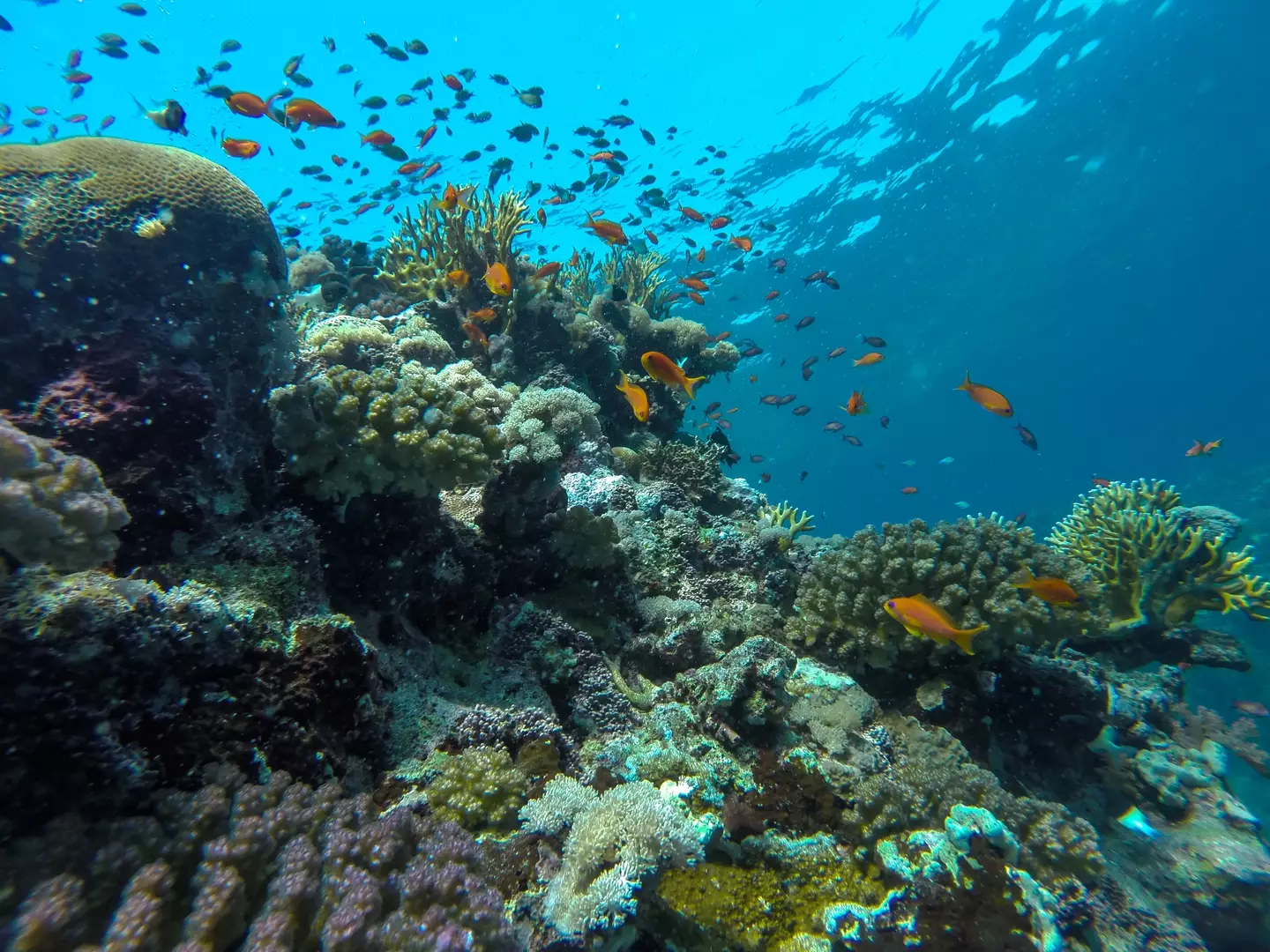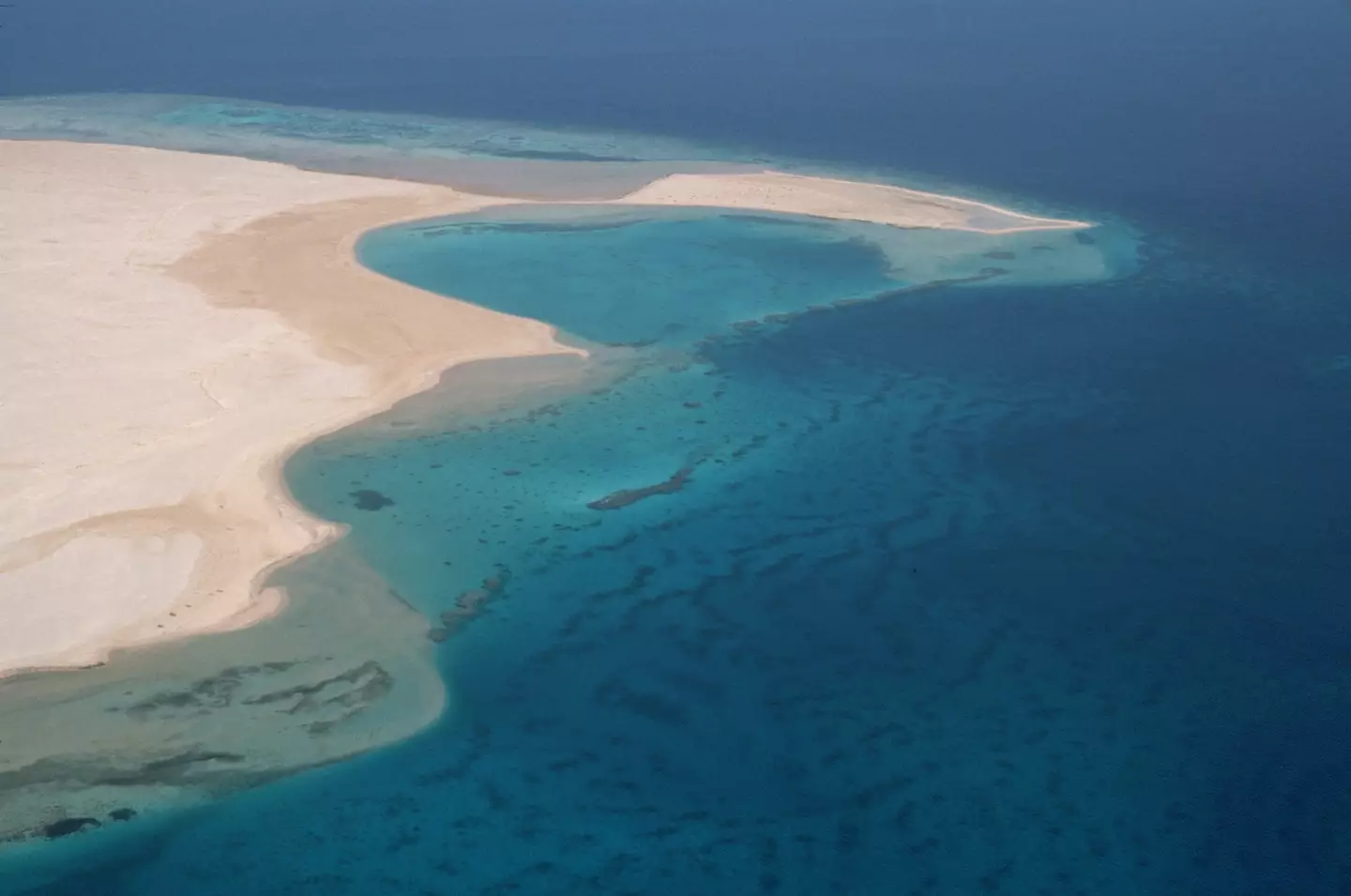Scientists studying the the Red Sea made a chilling discovery when they finally reached the bottom.
Located between Africa and the Arabian Peninsula, because why else would Moses need to cross it to escape from Egypt, the Red Sea is home to a fruitful and fascinating ecosystem.
It’s also an incredibly busy shipping lane, with all the traffic going through the Suez Canal except for the times some disastrous vessel gets stuck there.
The name of the Red Sea comes from the seasonal red blooms of algae which change the water from its usual blue-green hue to a red.
That’s all well and good for the surface, but dive deeper and scientists managed to find ‘death pools’ at the bottom of the sea.

The Red Sea is teeming with marine life, but not everywhere, not right at the bottom. (Getty Stock Photo)
They are so named as they’re devoid of oxygen, meaning that any animal which is unlucky enough to venture nearby is stunned and killed.
Anything which manages to be stunned but not killed will be picked off by opportunistic predators which lurk nearby to ‘feed on the unlucky’.
That’s not to say that there’s nothing inside the ‘death pools’, which are home to ‘extremophile microbes’ that can survive down there where little else can.
Studying the death pools can help us understand how life on Earth began, and even the potential for life on other planets.
Sam Purkis, professor and chair of the Department of Marine Geosciences at the University of Miami, said: “Our current understanding is that life originated on Earth in the deep sea, almost certainly in anoxic — without oxygen — conditions.
“Studying this community hence allows a glimpse into the sort of conditions where life first appeared on our planet, and might guide the search for life on other ‘water worlds’ in our solar system and beyond.”
The fact that the usual animals found at the bottom of the sea – such as burrowing shrimp, worms and mollusks – can’t survive in the pools mean that they remain unusually pristine.

Beneath that sea lie pools of absolute death which kill all by the most minuscule microbes and lay undisturbed by the world above. Spooky. (Getty Stock Photo)
“Ordinarily, these animals bioturbate or churn up the seabed, disturbing the sediments that accumulate there,” Purkis said.
“Not so with the brine pools. Here, any sedimentary layers that settle to the bed of the brine pool remain exquisitely intact.”
This means researchers were also able to use their findings to help learn more about tsunamis and earthquakes.
The newfound brine pools ‘represent an unbroken record of past rainfall in the region, stretching back more than 1,000 years, plus records of earthquakes and tsunami’.
Their findings suggest that in the past 1,000 years, major floods from serious rain occur about once every 25 years, and tsunamis [take place] about once every 100 years’.
Imagine that, down at the bottom of the Red Sea are pools largely untouched by the world above, tranquil and lethal in equal measure.
Additional words by Anish Vij.
Featured Image Credit: Getty stock photo/YouTube/Ocean X
Topics: World News, Weird, Science

Dr. Thomas Hughes is a UK-based scientist and science communicator who makes complex topics accessible to readers. His articles explore breakthroughs in various scientific disciplines, from space exploration to cutting-edge research.








